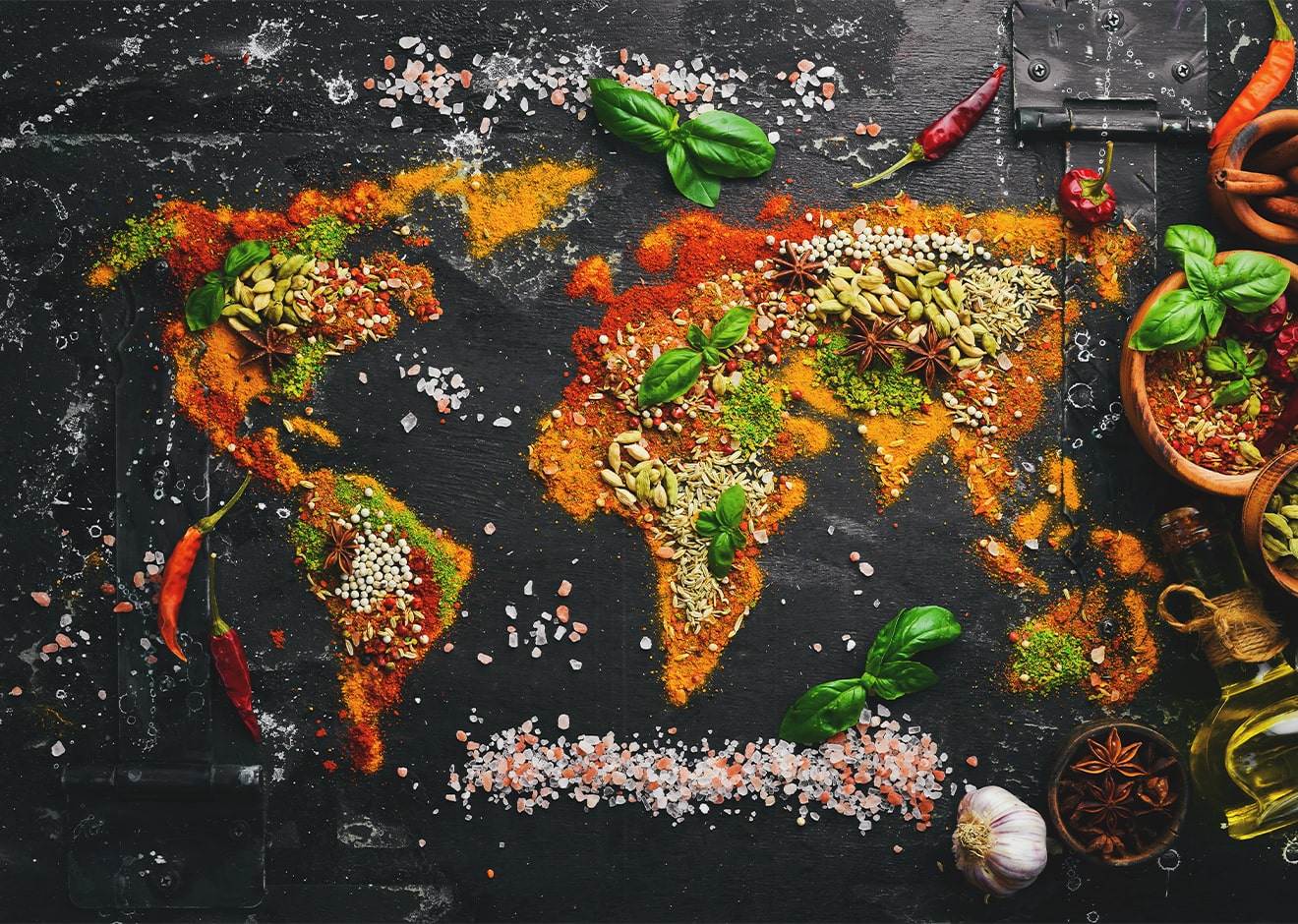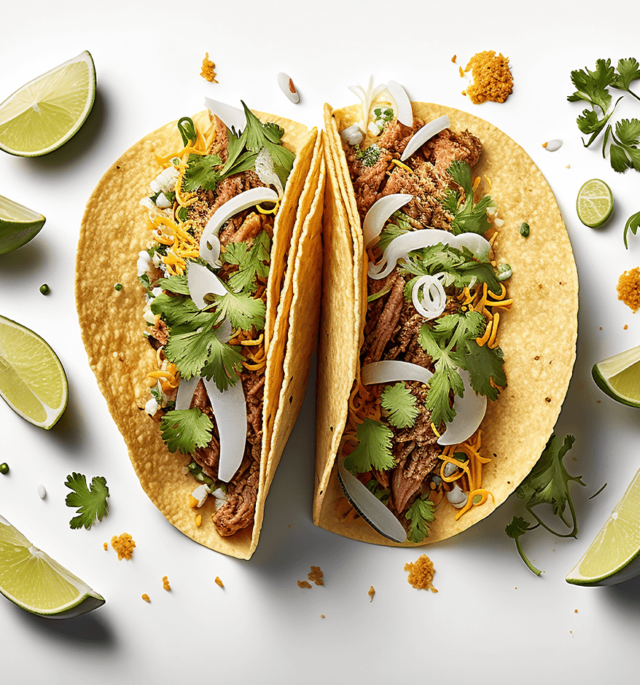
Table of Contents
Welcome to our culinary adventure where we explore the top 10 cuisines in the world. In this blog, we will embark on a gastronomic journey to explore the top 10 cuisines that have captured the hearts and taste buds of people around the globe. We’ll delve into the distinctive characteristics of each cuisine, highlighting their signature dishes, key ingredients, and regional variations. Get ready to tantalize your senses as we discover the culinary wonders of these diverse cultures.
So, fasten your seatbelts and prepare for a mouthwatering journey as we explore the incredible cuisines that have left an indelible mark on the world’s culinary landscape. Get ready to experience a symphony of tastes, aromas, and textures that will transport you to far-off lands and introduce you to the rich tapestry of global gastronomy.
Are you ready? Let’s savor the world, one bite at a time!
Italian Cuisine
Italian cuisine deserves the top spot with its globally loved flavors. Italian cuisine is universally admired for its incredible tastes, diverse dishes, and rich culinary heritage. Each region in Italy offers its own distinctive flavors, local dishes, and fresh ingredients. While Italian cuisine is based on the principles of simplicity and quality, it delivers rich flavors and exquisite tastes.
When it comes to Italian cuisine, pasta and pizza are among the first things that come to mind. The Italian expertise in pasta-making and its combination with various sauces have gained immense popularity worldwide. Various types of pasta such as spaghetti, fettuccine, lasagna, and ravioli are served with their own unique sauces.
Italian cuisine is loved worldwide and enchants with its flavors. Pasta, pizza, olive oil, cheeses, seafood, and regional diversity are the key elements of Italian cuisine.
French Cuisine
French cuisine is renowned for its globally acclaimed elegant dishes. French cuisine captivates with its excellent cooking techniques, high-quality ingredients, and sophisticated presentations. The French cuisine, which meticulously uses fresh ingredients, excels in sauces, cheeses, breads, and desserts. Dishes like boeuf bourguignon, Coq au Vin, and ratatouille are among the classics of French cuisine.
Additionally, French pastries and desserts have also gained worldwide fame. Delights such as croissants, macarons, and crème brûlée reflect the unique flavors of French cuisine. French cuisine also exhibits diversity through the distinct recipes and traditions of different regions. The seafood in Provence, meat dishes in Lyon, and the Alsatian influence in the Alsace region contribute to the variety of French cuisine.
Indian Cuisine
Indian cuisine is the gateway to the enchanting world of spices. It is famous for its colorful and aromatic dishes. Indian cuisine offers a variety of flavors based on India’s vast geographical and cultural diversity. Curries, spicy rice dishes, tandoori chicken, and masala chai are some of the flavors that reflect the richness of Indian cuisine. Each region has its own unique flavors and spice combinations, showcasing India’s diversity and understanding of taste.
Indian cuisine is also rich in vegetarian and vegan options. Dishes like dal tadka, samosa, biryani, and masala dosa are examples of Indian cuisine. Additionally, syrup-based sweets and Indian desserts are also very popular.
Japanese Cuisine
Japanese cuisine stands out with its aesthetic presentation and fresh seafood. Japan’s seafood-focused cuisine reflects a healthy and balanced approach to dining. Sushi, sashimi, ramen, and tempura are important parts of Japanese culinary culture. Sushi, served with fresh and natural fish, has gained immense popularity worldwide. Ramen, on the other hand, is a hearty soup with various ingredients and comes in different regional varieties.
Japanese culinary culture highlights the naturalness and freshness of carefully selected ingredients. Japanese tea ceremonies and traditional sweets called wagashi are also significant elements of Japanese cuisine.
Chinese Cuisine
Chinese cuisine is one of the oldest and most diverse cuisines in the world. Chinese cuisine exhibits variety with different regional flavors and cooking techniques. Sichuan, Cantonese, and Shanghainese cuisines are particularly notable branches of Chinese cuisine. The Sichuan cuisine, famous for its spicy flavors and the use of red peppers and Sichuan peppercorns, stands out. Cantonese cuisine is known for its light and fresh flavors, with examples such as dim sum, Peking duck, and Cantonese-style hot pot.
Rice and vegetables, which hold an important place in Chinese cuisine, reflect a healthy eating philosophy. Additionally, the quick cooking method in a wok and various sauces are characteristic features of Chinese dishes.
Thai Cuisine
Thai cuisine offers a perfect harmony of sweet, spicy, sour, and salty flavors. Thailand’s spice-filled cuisine is famous for its street food and restaurant dishes. Tom Yum soup, Pad Thai, green curry, and mango sticky rice are among the standout dishes of Thai cuisine.
Thai cuisine creates unique flavors by using various spices, herbs, and seafood. Ingredients such as lemongrass, cilantro, chili peppers, and coconut milk add distinct tastes to Thai dishes. Thailand’s street food is particularly famous for its night markets, offering a variety of options to suit everyone’s palate.
Mexican Cuisine
Mexican cuisine is famous for its spicy flavors, colorful presentations, and tortilla-based dishes. Mexican cuisine incorporates local ingredients such as corn, beans, peppers, avocados, and various herbs. Tacos, enchiladas, guacamole, and salsa are popular examples of Mexican cuisine.
The use of spices is widespread in Mexican cuisine, and chili peppers add a characteristic taste to their dishes. Additionally, the origin of chocolate can be traced back to Mexico, and it is commonly used in Mexican desserts. Mole sauce, Tres Leches cake, and Churros are some of the delights showcasing the richness of Mexican cuisine.
Turkish Cuisine
Turkish cuisine is renowned for its rich flavors, diverse dishes, and historical heritage. It reflects both the ancient culinary traditions of Anatolia and the influences of the Ottoman Empire. Turkish cuisine has been influenced by various regional cuisines due to Turkey’s geographical location and cultural diversity.
Each region has its own unique dishes, ingredients, and cooking techniques. For example, Aegean cuisine is focused on olive oil and emphasizes the use of seafood and olives, while Southeastern Anatolian cuisine is spicy and meat-centric. Meze, a variety of delicious plates consumed as appetizers or side dishes before meals, holds a significant place in Turkish cuisine. Meze includes a wide range of dishes such as olive oil-based vegetables, yogurt salads, dips and sauces, various cheese varieties, seafood, and hot appetizers.
Meat dishes are highly valued in Turkish cuisine. Kebab is one of the symbols of Turkish cuisine and comes in various types. Different types of kebabs, such as Adana kebab, skewered kebab, döner kebab, and İskender kebab, showcase the richness of Turkish cuisine.
Spanish Cuisine
Spanish cuisine offers a wide variety and range of flavors. It is based on key ingredients such as seafood, olive oil, garlic, onions, tomatoes, and peppers. Dishes like tapas, paella, gazpacho, and jamon are examples of Spanish cuisine.
Different regions of Spain also have their own distinct culinary characteristics. For example, Catalan cuisine has French influences, Basque cuisine highlights seafood, and Andalusian cuisine showcases Arab influences. Spanish cuisine is also famous for its beverages like wine and sangria. The tapas culture stands out as a social interaction style in Spanish restaurants.
Greek Cuisine
Greek cuisine reflects the fresh and healthy flavors of the Mediterranean. Olive oil, fresh vegetables, yogurt, fish, and cheeses are the foundation of Greek dishes. Souvlaki, moussaka, dolmades, and tzatziki are standout flavors of Greek cuisine.
Greece’s islands also have a rich cuisine when it comes to seafood and marine products. Additionally, phyllo pastry used frequently in Greek desserts, syrup-based sweets, and yogurt-based desserts hold significant places in Greek cuisine.
Each of these 10 cuisines from around the world is unique with its own flavors, regional specialties, and rich culinary heritage. The simplicity of Italian cuisine, the elegance of French cuisine, the spicy flavors of Indian cuisine, the fresh seafood of Japanese cuisine, the diversity of Chinese cuisine, the sweet and spicy balance of Thai cuisine, the spices of Mexican cuisine, the healthy ingredients of Turkish cuisine, the variety of Spanish cuisine, and the Mediterranean flavors of Greek cuisine all reflect the richness and diversity of global gastronomy.
The world’s top 10 cuisines are like a treasure trove for food enthusiasts. The flavors and experiences you can gain from each cuisine are limitless. By exploring the unifying power of food, they help us understand and respect different cultures.
Remember, cuisines around the world are constantly evolving and changing. Stay open to discovering new flavors and keep yourself updated in the world of gastronomy. Continue to explore the magical world of food and experience many other cuisines that will add new tastes to your palate. I hope you have enjoyable and delicious moments throughout your Tastemood journey!
- February 20, 2024
- 13 Min Read
Take a culinary voyage through French cuisine and discover the best French food that appeals to foodies around the world.
- July 18, 2023
- 25 Min Read
Discover the Most Popular Mexican Dishes with our savory guide! Bursting with flavor, these delectable meals guarantee a culinary fiesta.














